Asus U2E-1P057E 11.1in SSD Ultra-Portable Notebook Review
Asus U2E-1P057E 11.1in SSD Ultra-Portable Notebook
Is it time for the Sony TZ to move aside? Asus returns with another stab at the ultra-portable and this time it remembered the optical drive. Hooray!
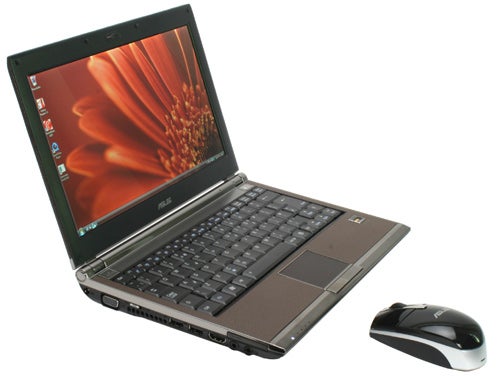
Verdict
Key Specifications
- Review Price: £1308.33
Rewind a year or so and we were taking our first look at a notebook all TrustedReviews readers should be familiar with, the Sony TZ. At that time Riyad reviewed the Sony VAIO VGN-TZ11MN and for those not well versed in TrustedReviews history, he and everyone else in our fraternity was more than impressed with what Sony had produced. It set a benchmark for what to expect from an ultra-portable notebook, winning our Best Notebook prize along the way. Now Asus, who previously challenged in this arena with the good but somewhat flawed Asus U1F, is once again making an assault to try and claim a slice of this niche but lucrative market, with its updated U2E.
Lucrative, of course, because ultra-portables command fairly hefty prices; even the current entry-level Sony TZ, the VGN-TZ31MN, costs under £1,300 and though this is relatively cheap given the TZ’s typically premium pricing, an impulse buy it isn’t. And, when you consider the top of the range edition with a 64GB SSD and integrated HSPDA will set you back over £2,000, as will a similarly specified Lenovo ThinkPad X300, they’re not an easy expense to justify.
Handy, then, that Asus has decided to price its entry extremely competitively. We’re the first to look at this model, the U2E-1P057E, and with 4GB of RAM and a 32GB Solid State Drive, its £1,300 to £1,400 asking price is a very competitive one when you consider that a similarly priced Sony TZ Series notebook comes with only 2GB of RAM and a standard 4200rpm 120GB hard drive. 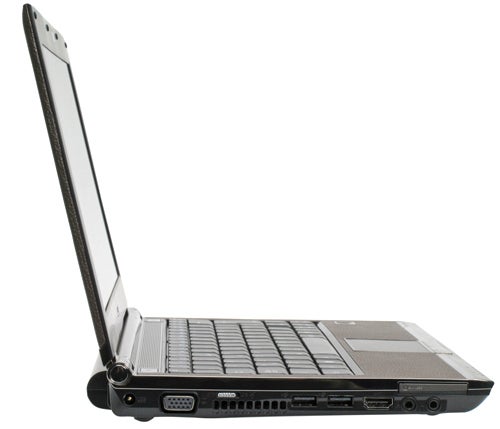
Asus is generous with what you get for that money, too. In the box you’ll find both 3-cell and 6-cell batteries and a nice selection of accessories, while the price also includes a two year hardware warranty. All combined the U2E is already making a good argument for itself based on value alone, but can it match its rivals in terms overall quality?
First impressions are certainly favourable. Though it perhaps lacks the initial wow factor of the Sony TZ, it’s a tough comparison and the U2E is no ugly duckling. As with the U1F and some other Asus notebooks, the U2E is furnished to a large degree in leather, both on the outside and inside. This model is the ‘Mocha Brown’ edition and both the colour and feel of the leather finish certainly gives the U2E the “deluxe” feel Asus is after. Likewise, the brushed metal edges and touchpad combine to create a very cohesive and classy look – anyone would be proud to own.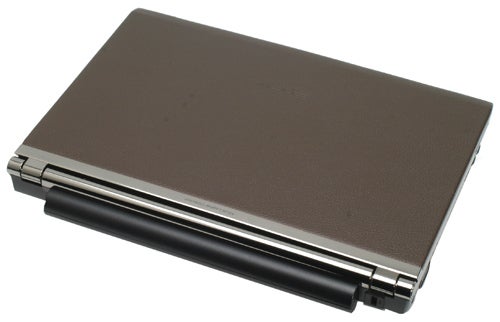
In this respect, then, the Asus U2E is a near resounding success and though some may feel tentative about the idea of leather on a notebook, its soft texture provides a welcome variation to the usual glossy or matte plastic found on the majority of notebooks.
Digging a little deeper into what you’re getting for your money, the U2E-1P057E is powered by the middle model in Intel’s Ultra-Low Voltage CPU range, the Core 2 Duo U7600. As the name suggests this is a dual-core chip with each core running at 1.2GHz, with 2MB L2 Cache and a 533MHz Front Side Bus shared between them. This is ably supported by a generous 4GB of RAM and though it only comes with a 32-bit OS (32-bit Vista can only use 3GB) it does ensure you’ve got plenty of headroom for running applications, and opens up the possibility of installing 64-bit Windows as well.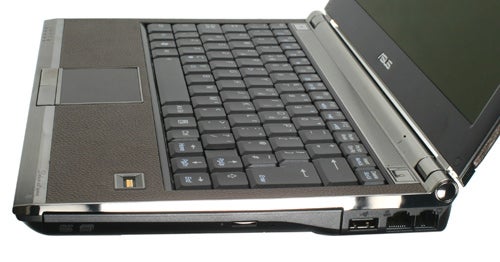
Of course, the real star of the show is the 32GB SSD – a technology that’s slowly and surely creeping its way towards the mainstream. Indeed, in this class (Asus Eee PC 900 and kin excluded) this is definitely the cheapest notebook we’ve seen to feature one, which given its other features is impressive. But what are those other features?
To begin with, one slight advantage the U2E has over both the Sony TZ is that it’s based on Intel’s GM965 Express chipset, as opposed to older generation GM945. Though the current ULV processors don’t support some of features available on GM965, it does mean that the U2E utilises the slightly superior X3100 integrated graphics. It’s only a small difference, perhaps, but one that some may find significant.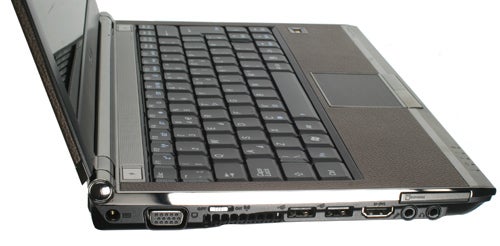
Elsewhere, the U2E packs in all the features one would expect of a premium laptop. Networking options include Draft N capable wireless and Gigabit Ethernet for wired connections; while Asus still manages to include support for a dial-up modem should you require it. Also on-board is Bluetooth 2.0+ EDR and a 0.3 Megapixel camera, and a TPM security chip and fingerprint reader round off what’s an already very comprehensive feature set.
A feature set that includes, unlike its predecessor, an integrated optical drive. Everyone has an opinion on how important or unimportant optical drives are in ultra-portables, but given the choice we’d sooner have one than not, so this is definitely a positive step. Short of just being there, though, there’s nothing at all remarkable about the 8x DVD+/-RW drive included.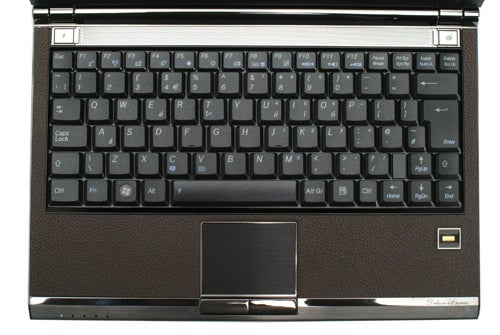
There are, however, further delights to be had in the connectivity department. A total of three USB ports on a chassis this size is certainly welcome, as are the usual suspects like the 34mm ExpressCard slot, modem and Ethernet ports, 6-in-1 memory card reader and D-SUB (VGA) video output. But the real draw is the inclusion of an HDMI (labelled mini-DVI) port and a HDMI-to-DVI adapter to go with it. This is something unique to Asus in this arena and given it provides you with a means for digital output to a monitor or TV; it’s a very welcome addition.
Thus far it’s clear the Asus U2E-1P057E is both an attractive and exceedingly well featured notebook selling at a price that makes a mockery of its more expensive competition, but what is it like to use? As you’d expect it’s exceedingly light and effortlessly portable. It’s not quite as light as the 1.19kg Sony TZ with its standard 6-cell battery, weighing in at 1.41kg, but the lower capacity 3-cell brings this down to 1.25kg and either way it’s hardly back achingly heavy. It goes without saying, too, that this is a thin machine. Measuring a mere 29mm thick, 277mm wide and 194mm deep, it’s everything an 11.1in ultra-portable should be.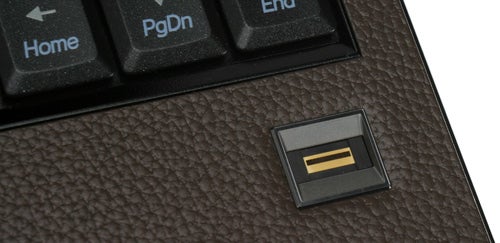
You won’t be disappointed by that 11.1in screen, either. We’re willing to bet this is an identical panel to that found in the Sony TZ and even if it isn’t, it’s just as good. As with the TZ it’s an LED backlit affair and it’s superbly bright, colourful with black levels that will delight anyone used to even reasonably good notebook displays. Its 16:9 ratio 1,366 x 768 resolution makes it ideal for watching films, though its glossy finish means predictable, though relatively minor, reflection issues in strong ambient light scenarios despite moderately good horizontal viewing angles.
Speaking of watching films, it won’t come as too great a surprise to hear that the integrated speakers are pretty poor. They’re ‘stereo’ only in name, with two speakers set into the right side of the front edge. Headphones, speakers; whatever your preference you’ll need one or the other.
This, however, is an entirely insignificant complaint compared to those that can be made of the keyboard. As with many keyboards, it lives and dies on the smaller details and there are one or two glaring issues on the U2E. First, the placement of the right Shift key is exceedingly poor. It has been reduced in size and set to the right of the upward cursor key and as someone who has always favoured this over the left Shift this proved a cataclysmic annoyance; one that regularly resulted in me hitting the cursor key at inopportune moments.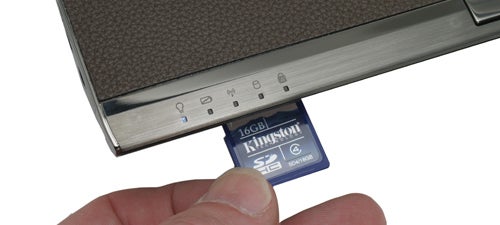
As ever, the relevance of this problem will vary from person to person so if you can manage it, it’s worth seeking out a demo unit to try it out. Moreover, though the rest of the layout is fine, another concern about the keyboard is an appreciable level of flex. This does give the keys an ever so slightly sticky feel to them and though it’s nothing like as annoying as the Shift key issue, if there’s one area the U2E falters in reference to its competition, the keyboard is it.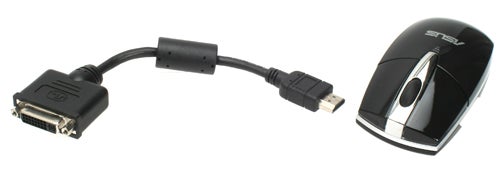
Another notable annoyance is the noise levels the U2E occasionally produces. Few if any notebooks can claim silence and even the Sony TZ is known to get a tad blowy at times, but the fan on our U2E exhibited a tangible buzzing noise at high speeds. We’d be willing to dismiss this as a one-off, but others have reported similar issues and in situations where silence is appreciated, it’s bound to grate. As will, for that matter, the abundance of Asus’ own software loaded onto the machine, most of which could quite easily be dispensed with.
The Asus U2E-1P057E was put through our usual set of tests, including PCMark 05 and Vantage, our in-house Photoshop Elements and VirtualDub tests and MobileMark 2007 for testing the battery performance. And, using the similarly priced Sony VAIO VGN-TZ31MN and Lenovo Thinkpad X300 for comparison, in raw terms this U2E compares very well.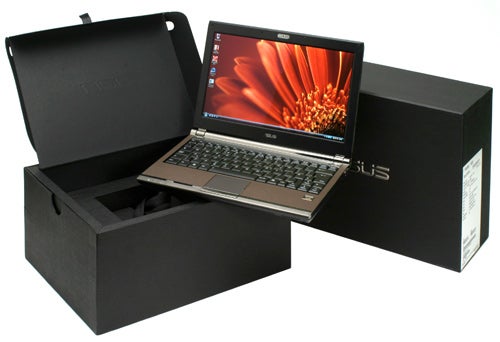
Despite sharing an identical processor to the Sony its SSD helps it inch a significant lead out in both versions of PCMark, particularly in the HDD tests and in PCMark Vantage, the Productivity tests. These are the scenarios where the fast access times of the SSD come through, making light of the moderate CPU behind it all. In general use this drive certainly helped the U2E feel more responsive, with programs launching faster and boot times and sleep mode transitions improved. Unsurprisingly, though, the faster CPU and SSD in the ThinkPad X300 meant it trounced both of them, though it’s obviously significantly more expensive as well.
This pecking order is continued in the in-house tests, but the MobileMark 2007 battery tests show why Asus felt the need to include two batteries in the box. Here the Sony TZ shows its strength, managing over six and half hours on a single charge, whereas the Asus ceased performing at a comparatively short four and a quarter hours. Still a good effort compared to standard machines, but less than both the stupendous lifespan of the Sony TZ and even the larger and higher power ThinkPad X300.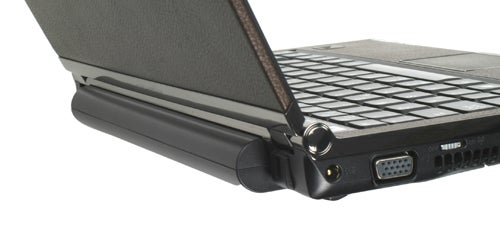
However, the second three-cell battery offsets this issue somewhat, since it offers essentially half the lifespan of the six-cell again – the productivity test ended after 123 minutes, just under half the 256 minutes of the six-cell. Even the 379 minutes combined still falls short of the 396 minutes of the TZ, but given the saving it’s an acceptable compromise. It’s only a shame this won’t be of much help when watching films, would you really want switch batteries mid-movie?
So, if you want the ultimate in battery life then the Sony TZ is still your best bet, but if you’re happy to utilise both batteries the difference isn’t too extreme and the performance benefits of more memory and an SSD hard drive are significant enough to make it worthwhile.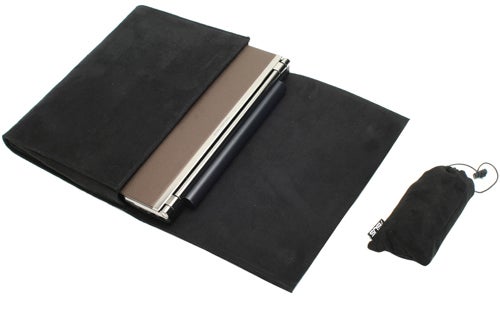
Verdict
Despite some niggling issues regarding the keyboard and a noisy fan, it’s hard to ignore the value and quality on offer here. With two batteries in the box, HDMI output, 4GB RAM and an SSD for the same price as a fairly basic entry-level Sony TZ, it puts down a formidable challenge to its competitors. Add in the excellent screen, good performance and attractive design and you’ve got an exceedingly tempting alternative. Our only other regret is the lack of an HSDPA equipped version.
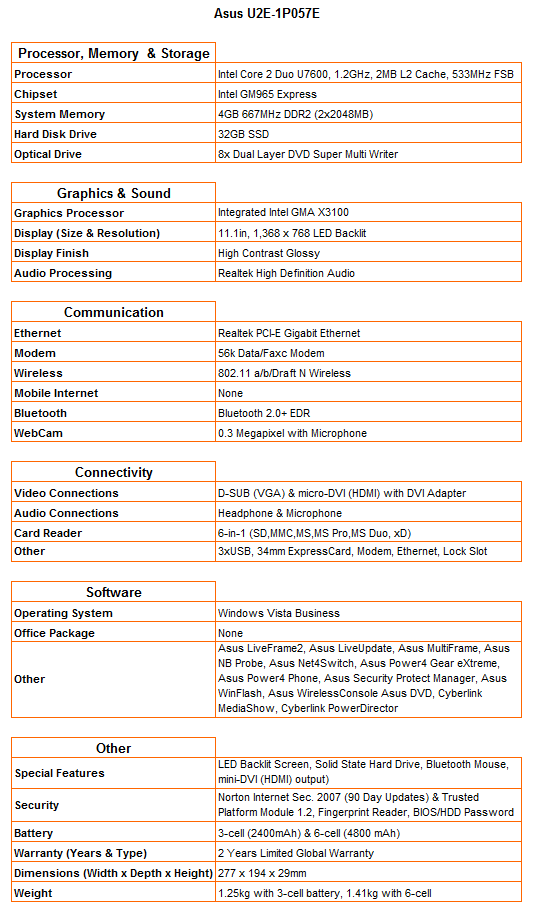
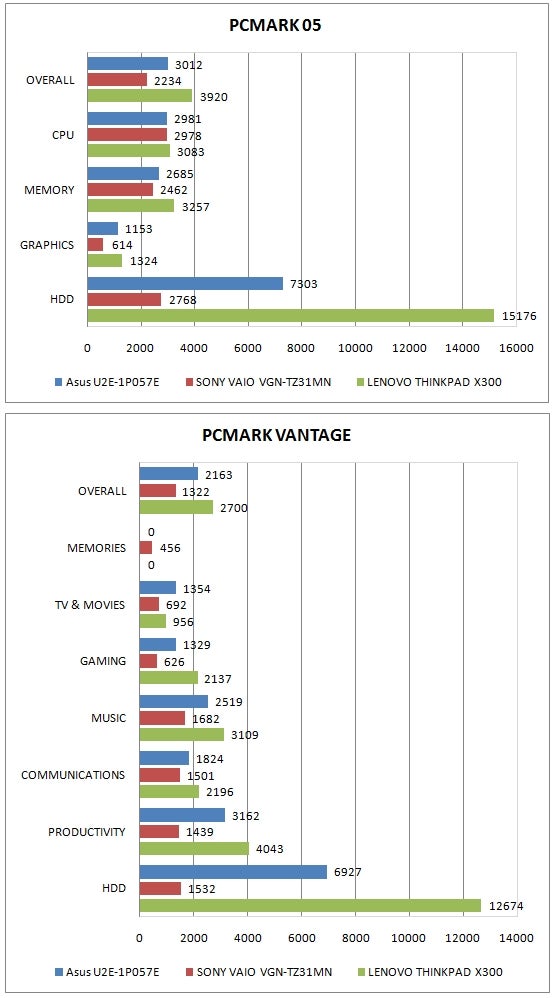
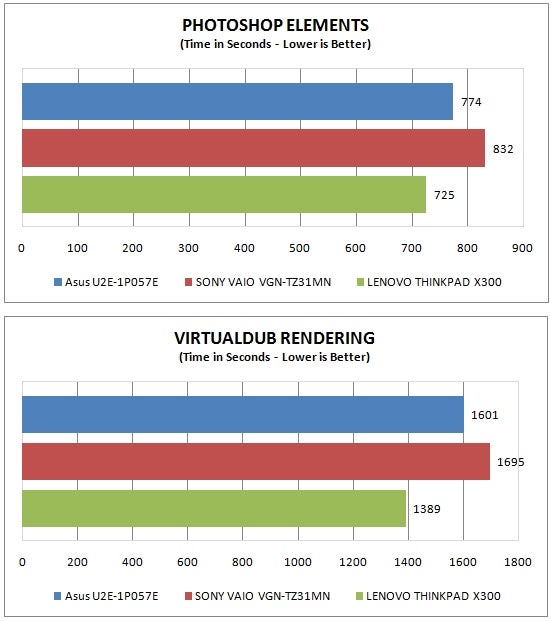
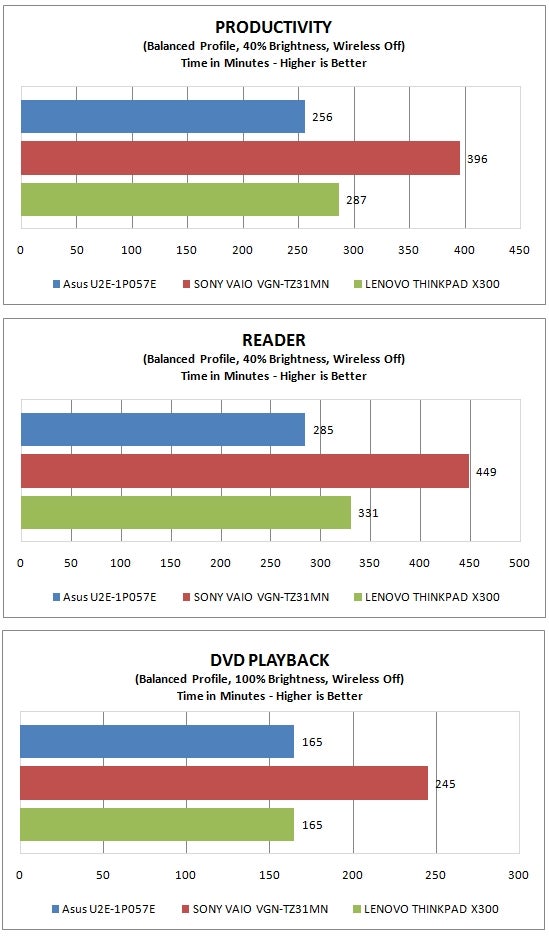
How we test laptops
Unlike other sites, we test every laptop we review thoroughly over an extended period of time. We use industry standard tests to compare features properly. We’ll always tell you what we find. We never, ever, accept money to review a product.
Trusted Score
Score in detail
-
Performance 9
-
Design 8
-
Value 10
-
Features 9

